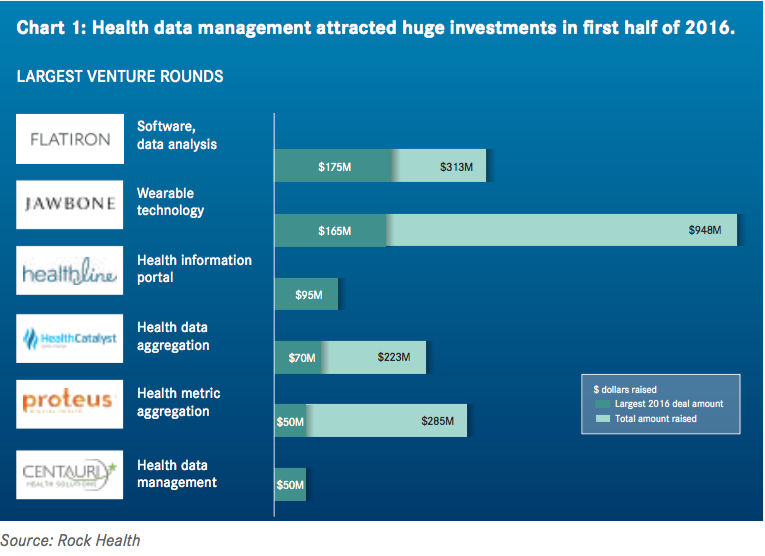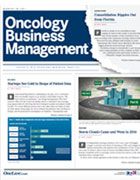Publication
Article
Special Issues
Startups See Gold in Heaps of Patient Data
Author(s):
Boston-based Berg Health is attempting to do away with a traditional form of scientific inquiry in an attempt to find better answers.
Ranga Saragarajan, PhD

Ranga Saragarajan, PhD
Boston-based Berg Health is attempting to do away with a traditional form of scientific inquiry in an attempt to find better answers. “We don’t believe in hypotheses,” says Ranga Sarangarajan, PhD, chief scientific officer for the 8-year-old startup, which is looking for new oncology drug opportunities by distilling data from biological samples and patient health records. “It’s a more efficient process, but it also takes away our biases of what we think about a drug target, its role in influencing pathways that contribute to disease, and the potential for development of treatment,” Sarangarajan said.

Berg Health is among an outpouring of big data startups that have attracted venture capital funding on faith that super-fast computers directed by powerful algorithms can lead to health solutions and business success (Chart 1). Many believe that data for these initiatives are already available, buried in databases of patient information. In fact, Berg Health was co-founded by Silicon Valley, California, real estate tycoon Carl Berg partly on the principle that exploiting those repositories could significantly reduce the cost and time needed for drug discovery. Besides in Silicon Valley, pockets of digital health entrepreneurship are developing across the country (Chart 2).
Other prominent digital health startups are crunching health data in different ways. One of them is Flatiron Health, a four-year-old New York City company that in addition to selling electronic health record (EHR) software is plumbing real-world patient data to help physicians and researchers better understand how patients will respond to certain drugs. Company Chief Medical Officer Amy Abernethy, MD, PhD, explained that drug approvals often are built on clinical trial patient cohorts that differ from the groups of typical patients in the real world.
Companies mining the promise of big data also include Benefits Science Technologies and Ayasdi. Benefits Science Technologies, of Massachusetts, is capitalizing on employers’ desire to know more about the health of their employee populations and why their health plan costs are changing. The company aggregates patient data as it becomes available and funnels that through dashboard-style monitoring systems that explain the ow of healthcare dollars.
Palo Alto-based Ayasdi enables physicians to find optimal care pathways using analyses of health data from patient populations that are local to the clinics that subscribe to the service. One of Ayasdi’s largest contracts is with the Mercy hospital network—a Midwestern group that serves millions of patients. The company claims its system delivers better outcomes and lower costs.
Investor money is pouring into this market. In 2015, digital health venture capital funding reached $4.5 billion, up from slightly over $1 billion in 2011, according to Rock Health. The single largest venture capital deal of 2015 measured $200 million and went to NantHealth, developer of the GPS Cancer test, which the company says goes far beyond biomarker assays and actually predicts drug efficacy per patient by looking deeply into cell biology and RNA. By the end of 2015, the company had raised a total of $680 million. In June of 2016, NantHealth launched an initial public offering.
Many of these companies fall into the category of “garage biotechs.” They are often seeded with money from venture capitalists. These companies may end up being sold or become established as independents. What they have in common is super-fast processing and an idea for how to capitalize on big data.

Potential for Broad Utility
Berg Health has succeeded with this approach in the development of BPM 31510, a drug that capitalizes on a tumor cell’s heavy dependence on glucose for the energy needed to grow and divide. The company developed BPM 31510 based on what it knew about cell biology and by sorting through clinical trial patient data. BPM 31510 exploits the Warburg effect: when the cell is unable to obtain the glucose-based sustenance it needs from the mitochondria, it resorts to making energy from the glucose in the cell cytoplasm. By doing this, the cell sidesteps pathways that regulate cell life and death. BPM 3150 mediates an increase in mitochondrial activity, and the resulting stress activates cell-death pathways in cancer cells. “This drug reengages the ability of the cell to become controlled by the mitrochondria to rebalance the life/death equilibrium,” Sarangarajan said.The more aggressive the tumor cell, the better BPM 31510 works, he said. In early trials, the company has tested the drug on pancreatic and brain cancers, as these cancers are metabolically more active. Sarangarajan said Berg is hopeful that, for the same reason, BPM 31510 will be successful in triple-negative and other forms of (eg, HER2-positive) breast cancer.
Larger Patient Cohorts
BPM 31510 may take a couple more years to get to market, Sarangarajan said, adding, “I can tell you this: based on the speed of development from our startup, to the discovery, to our phase I/phase II, it is going to be significantly less than the traditional 13 years to 15 years that it takes to get a new drug to the marketplace. Even if we reduce time to market by one-third to one-half, we would have achieved a significant milestone in the timelines for development. Ten to 15 years ago this would not have been possible. We are reaping the benefits of the significant advances that have taken place in all supporting technologies.” In addition, the cost of developing the drug will be well under the current average of $2.1 billion over 16 years, Sarangarajan said. “It definitely is not going to be that much.”Flatiron works with electronic health records from multiple institutions to formulate its real-world guidance for physicians. This year, in a project to examine use of checkpoint inhibitors nivolumab (Opdivo) and pembrolizumab (Keytruda) in patients with non—small cell lung cancer (NSCLC), Flatiron demonstrated that clinical data used for drug approval decisions was not a perfect match for real-world patient populations. The company looked at a cohort of 1578 patients, far more than the FDA had seen from NSCLC clinical trial results. “In the trials, the median age was 61 and 64, [respectively] whereas in the real world the median age is 69, and we’ve got over a third of patients over the age of 75—which is very different than the clinical trials population,” Abernethy said.
Inter-institutional relationships, such as Flatiron has formed, are key to accessing large pools of data and achieving advances in data mining, Sarangarajan said. “You might already have the information you need, but it hasn’t been thoroughly parsed, and I think people are understanding that working together is critical to get to solutions to some of the hurdles. I think that as we move forward, more and more of these consortiums are going to be formed.”
But getting at the needle of value in the data haystack is going to take informed analysis—and time, he said. “It is going to take time for people to figure out which data are truly relevant, and then to put these pieces together and run the analysis to actually effectuate an outcome. I’m not only talking about retrospective data, but about all the data that are being generated, such as from wearable technology. There seems to be value, but the realizations of that value are still quite far away.”






















%20(2)%201-Recovered-Recovered-Recovered-Recovered-Recovered-Recovered-Recovered-Recovered-Recovered-Recovered-Recovered-Recovered-Recovered-Recovered-Recovered-Recovered-Recovered.jpg?fit=crop&auto=format)
%20(2)%201-Recovered-Recovered-Recovered-Recovered-Recovered-Recovered-Recovered-Recovered-Recovered-Recovered-Recovered-Recovered-Recovered-Recovered-Recovered-Recovered-Recovered.jpg?fit=crop&auto=format)
